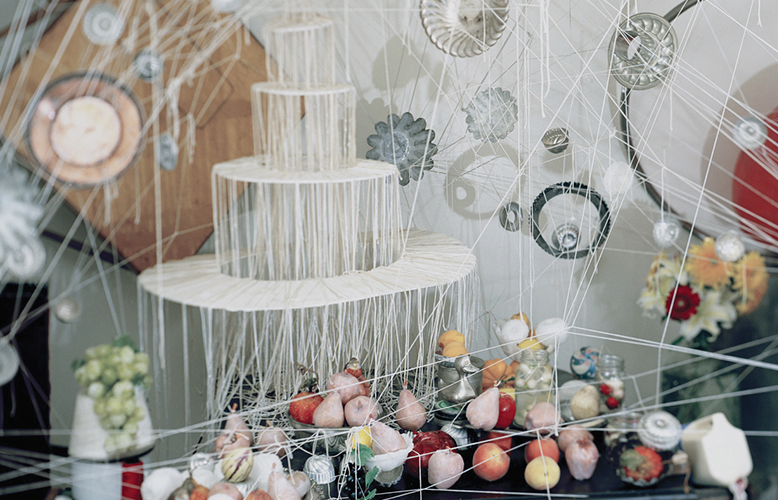(Artwork above: Wedding Cake by Greg Amanti)
Discovering photography at age 22 launched Greg Amanti’s career as a master mold maker, stone carver, and critically acclaimed artist and artisan.
“My wife was attending Southern Oregon College (now University). She let me take her photography class. It was just like, ‘This is it!,’” Amanti recalls. Then he laughs. “She ruined me.”
Since then, Amanti’s work has garnered much attention, including an exhibition at the Fort Collins Museum of Contemporary Art, the Hinterland Art Space, The Miami Photo Salon during Art Basel, The Workhouse and The Redline Art Center’s “Between the Medium Seeing Photographically” show during the Month of Photography curated by renowned photographer Mark Sink.
Amanti’s photography, which includes still lifes and landscapes, reveals his fascination with shapes and patterns. “My works begins with misinterpretation of sights and sounds,” says Amanti, who has collaborated with the Bend Design Conference for the 2030 Future Fair Art walk’s Design Challenge as well with the 2016 and 2017 Bend Design exhibit installation in the Liberty Theater. “I’ll be watching a movie and I’ll think I see something and it sparks a visual image in my head.”
Over the years his creations—often launched by an image that was never really there in the first place or a piece of music (his favorite for this purpose being abstract jazz)—morphed. “I was mostly doing mold work, which would then be cast into metal,” Amanti says. “With mold work, you’re working with rubbers and plaster. I fell in love with those materials, which are just so sumptuous. Then I started seeing everything in a positive-negative space, because with a mold you see the reverse image. That captivated me as well and sprung me in a whole different direction.”
So some ten years after initially discovering photography, Amanti married his images and the three-dimensional form. Starting with a sketch, he uses string (to represent connection), plaster and almost any other material you can imagine to create massive installations, which he then photographs. In one gallery showing both installation and photograph were displayed side by side. Usually, however, the installation itself is destroyed once it has served its purpose.
With each piece, Amanti aims to create a visceral landscape that reveals itself a little at a time and into which the viewer is immersed. How he gets there is dictated as much by his materials as by his initial vision. “I have an idea and then as I’m working I’m informed by the materials. How they’re reacting to the space, how I’m working with the materials themselves, how they look in the actual image,” he says.
So it’s rare that something in Amanti’s head gets portrayed literally in his art. “That’s the fun part,” he says.
What’s coming out of his head these day is redirecting Amanti’s art yet again. In a recent creation, he wrapped up almost ten years of work into one photograph. “I threw everything into the pot—images, snapshots, items that I used in other still lifes,” he says. “It’s a photograph of an installation but the installation itself had elements of all the pieces I had done.” The homage allowed him to close that chapter. “I want to challenge myself. Not that it’s easy to do some of these shots. But I know the language and it’s not pushing me anymore. So I’m done. It’s time to move on a little bit.”
Ideas for upcoming works include “a forest of pieces” sculpture made from wood and layers of latex paint and a portrait series, possibly of refugees, with blurred images overlaying the crisp ones to evoke the refugees’ nowhere status. As before, the work will likely evolve slowly over time. And while Amati hopes that people will continue to connect with his art, that has never been what drives him.
“Ultimately, I want to please myself with my work,” Amanti says. “You’re never fully pleased, and it’s never fully done. But if I feel if I can move forward or express something that was in my head, I’m good.”

